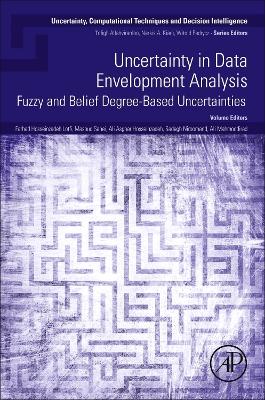Uncertainty, Computational Techniques, and Decision Intelligence
1 total work
Uncertainty in Data Envelopment Analysis
by Farhad Hosseinzadeh Lotfi, Masoud Sanei, Ali Asghar Hosseinzadeh, Sadegh Niroomand, and Ali Mahmoodirad
Published 24 May 2023
Classical data envelopment analysis (DEA) models use crisp data to measure the inputs and outputs of a given system. In cases such as manufacturing systems, production processes, service systems, etc., the inputs and outputs may be complex and difficult to measure with classical DEA models. Crisp input and output data are fundamentally indispensable in the conventional DEA models. If these models contain complex uncertain data, then they will become more important and practical for decision makers.
Uncertainty in Data Envelopment Analysis introduces methods to investigate uncertain data in DEA models, providing a deeper look into two types of uncertain DEA methods, fuzzy DEA and belief degree-based uncertainty DEA, which are based on uncertain measures. These models aim to solve problems encountered by classical data analysis in cases where the inputs and outputs of systems and processes are volatile and complex, making measurement difficult.
Uncertainty in Data Envelopment Analysis introduces methods to investigate uncertain data in DEA models, providing a deeper look into two types of uncertain DEA methods, fuzzy DEA and belief degree-based uncertainty DEA, which are based on uncertain measures. These models aim to solve problems encountered by classical data analysis in cases where the inputs and outputs of systems and processes are volatile and complex, making measurement difficult.
